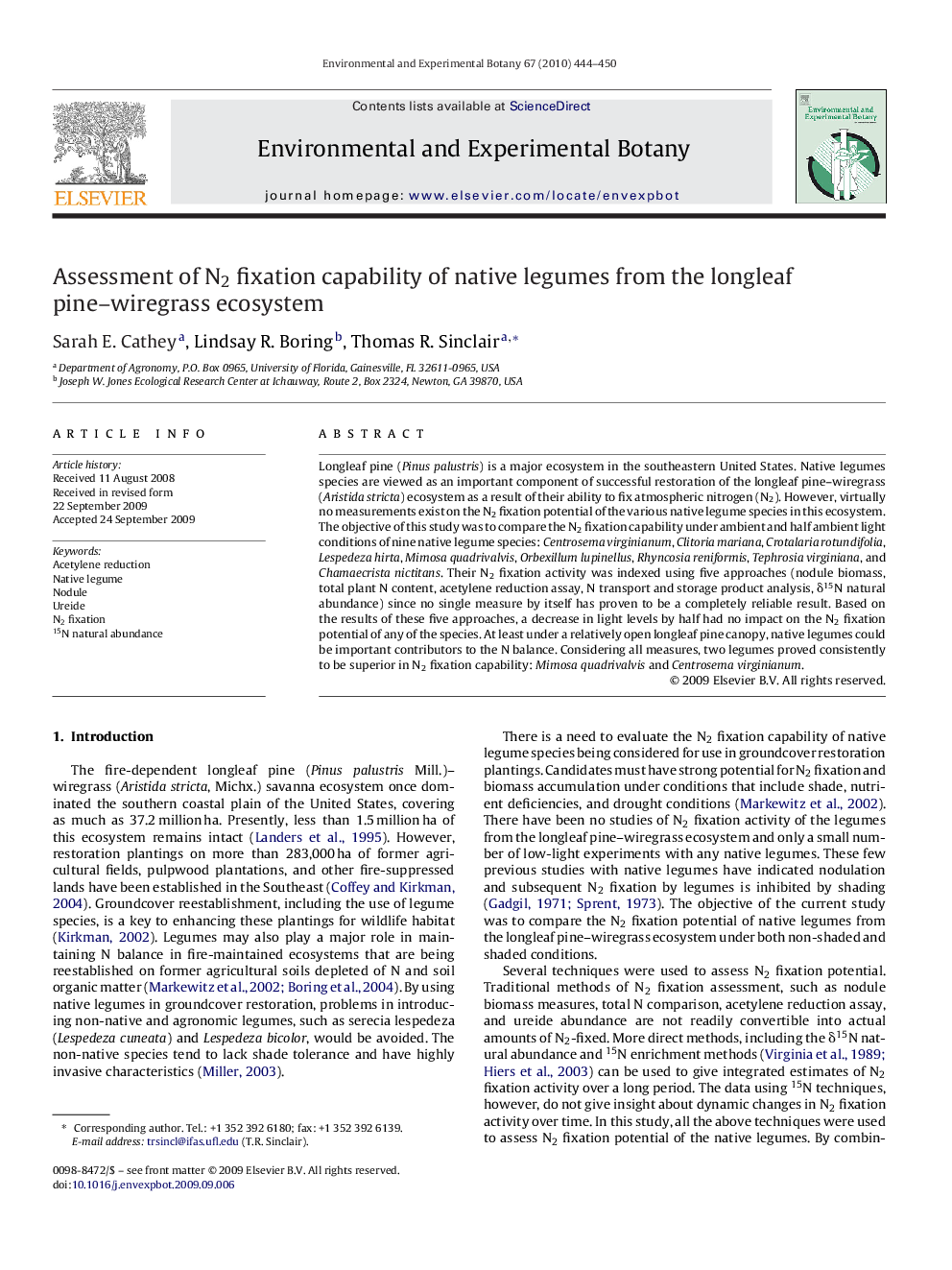| Article ID | Journal | Published Year | Pages | File Type |
|---|---|---|---|---|
| 4555094 | Environmental and Experimental Botany | 2010 | 7 Pages |
Longleaf pine (Pinus palustris) is a major ecosystem in the southeastern United States. Native legumes species are viewed as an important component of successful restoration of the longleaf pine–wiregrass (Aristida stricta) ecosystem as a result of their ability to fix atmospheric nitrogen (N2). However, virtually no measurements exist on the N2 fixation potential of the various native legume species in this ecosystem. The objective of this study was to compare the N2 fixation capability under ambient and half ambient light conditions of nine native legume species: Centrosema virginianum, Clitoria mariana, Crotalaria rotundifolia, Lespedeza hirta, Mimosa quadrivalvis, Orbexillum lupinellus, Rhyncosia reniformis, Tephrosia virginiana, and Chamaecrista nictitans. Their N2 fixation activity was indexed using five approaches (nodule biomass, total plant N content, acetylene reduction assay, N transport and storage product analysis, δ15N natural abundance) since no single measure by itself has proven to be a completely reliable result. Based on the results of these five approaches, a decrease in light levels by half had no impact on the N2 fixation potential of any of the species. At least under a relatively open longleaf pine canopy, native legumes could be important contributors to the N balance. Considering all measures, two legumes proved consistently to be superior in N2 fixation capability: Mimosa quadrivalvis and Centrosema virginianum.
